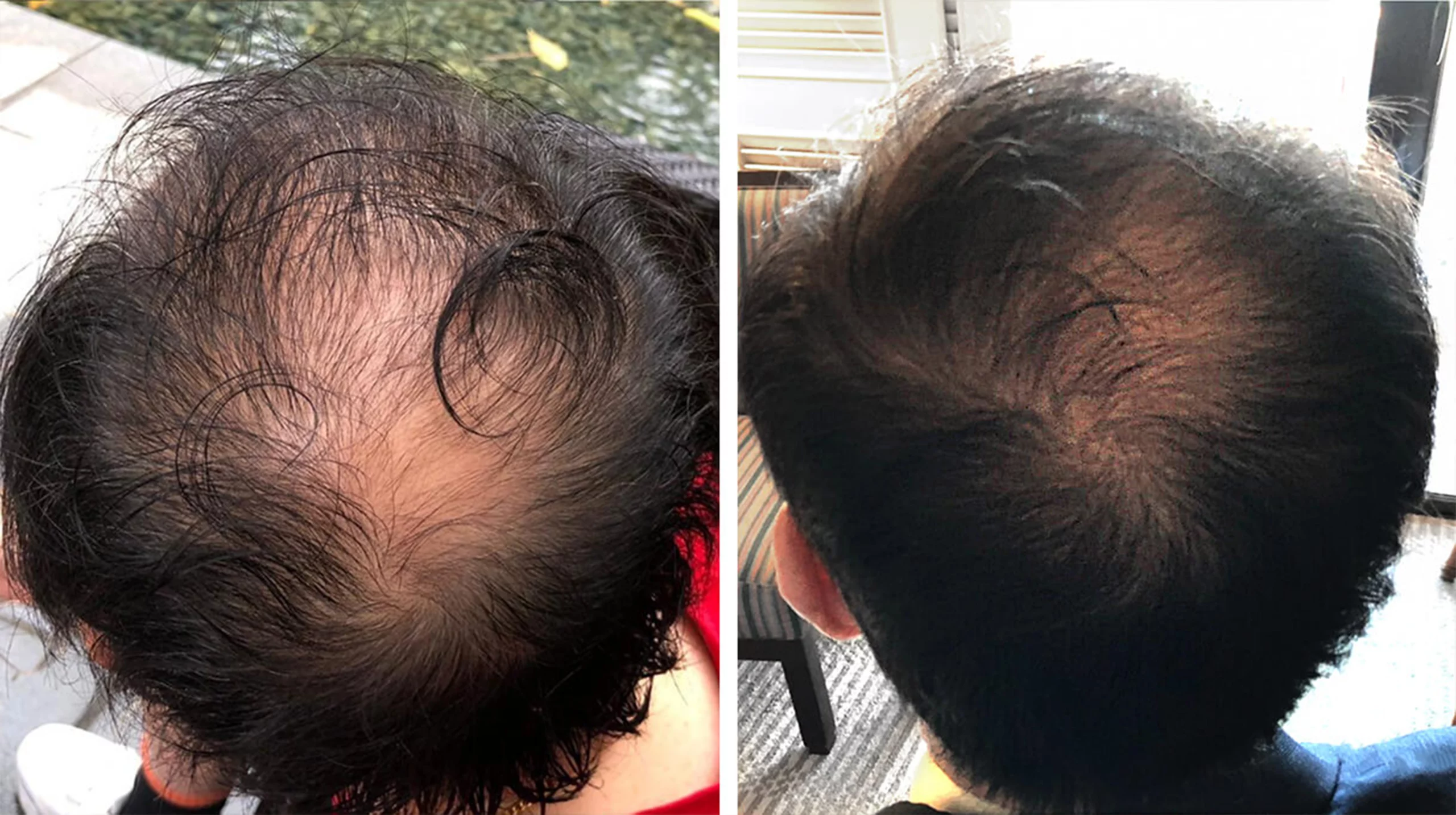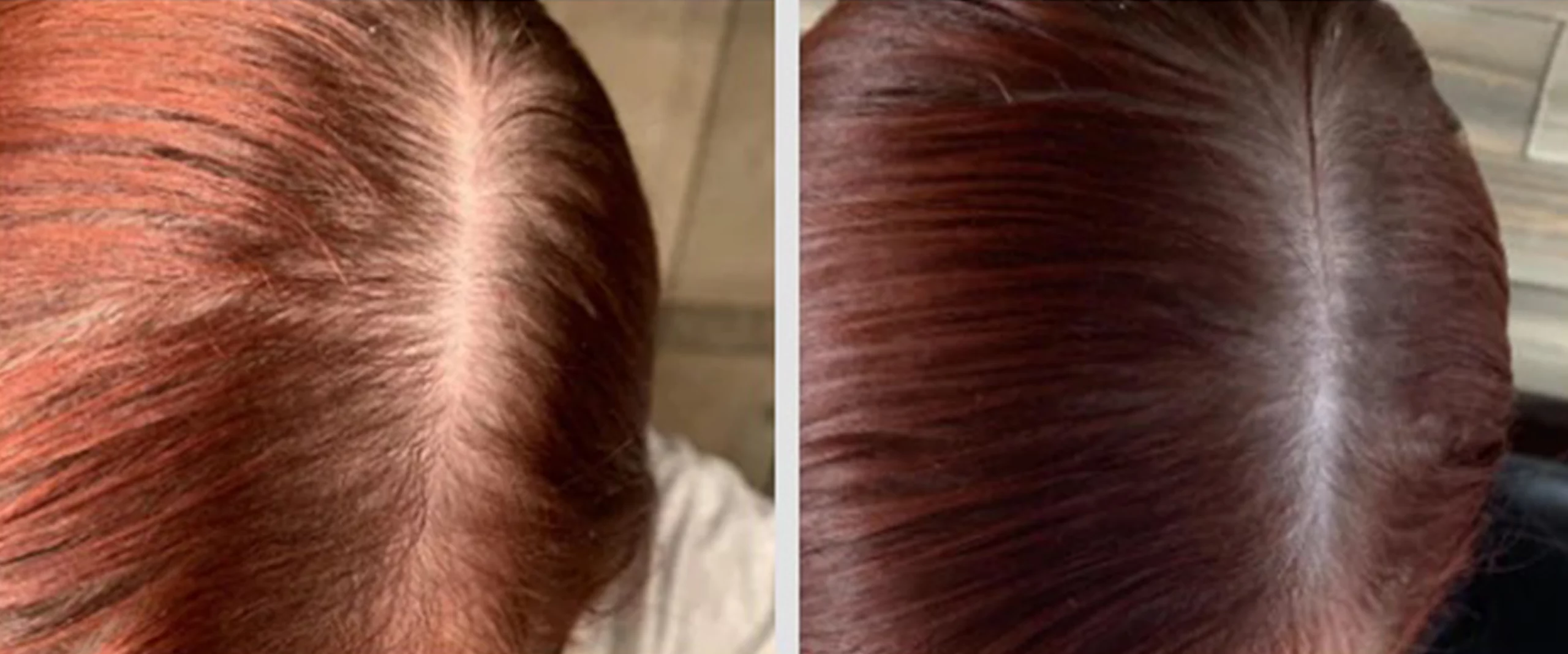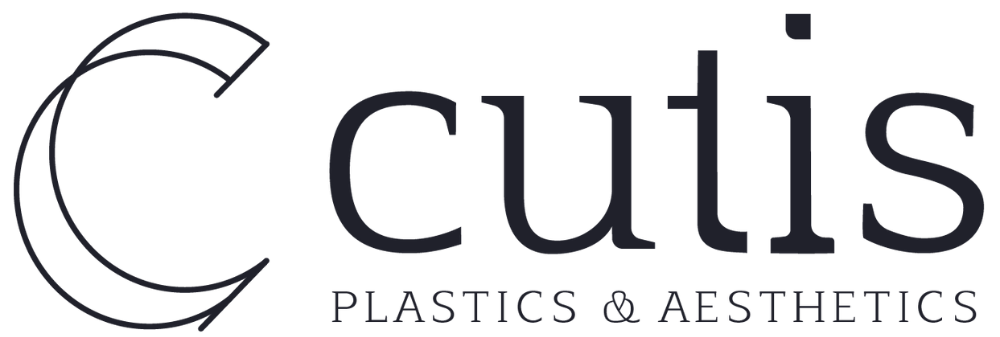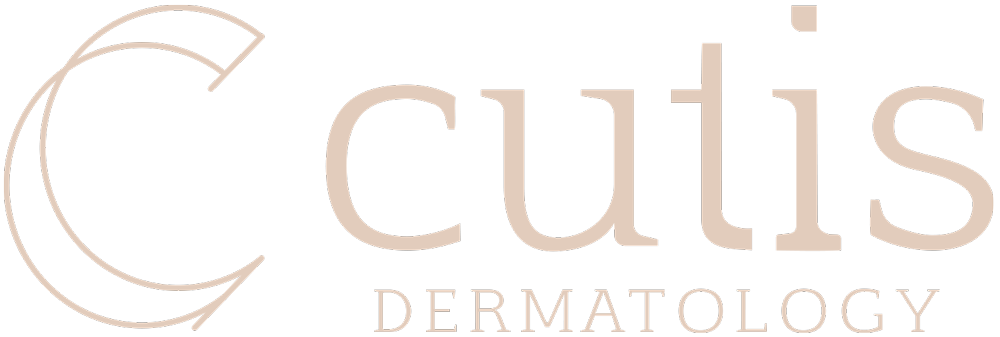Home devices such as laser helmets are effective in early stages of hair loss. They help to slow down shedding, prolong the growth phase of the hair follicle & awaken dormant hair to grow faster & stronger. Combined with medical therapy & growth factors we can halt hair loss in over 90% of cases & regrow hair in over 80% of patients.
Key Points
- Laser hair restoration is effective in both male & female pattern hair loss
- Laser helmets are far superior compared to combs or wands
- Early treatment of hair fall gives the best results
- Home treatments are performed 3 times per week
- Lasers are best combined with growth factors & medical therapy
- Lasers work by improving blood flow to the follicles
- The best devices combine LED with low level red lasers
Laser Hair Restoration at a glance
Our results speak for themselves

Before
After

Before
After

Before
After
FAQs
What is the data behind laser hair restoration?
Laser hair restoration has a good amount of solid data & can be recommended as adjunctive treatment for male & female patterned hair loss. When combined with other therapies such as growth factors, enzyme inhibitors & follicle stimulating lotions we can halt balding in over 95% of cases & regrow hair in nearly 80% of patients.
How do lasers work?
Lasers work by reducing hair loss & stimulation of hair growth; hence they prevent hair loss & encouraging new hair to form. They also increase the blood supply to hair follicles, promoting growth factors.
Lasers increase the diameter to the hair shaft, resulting in higher density in balding areas.
What stage of hair loss should I consider laser hair restoration?
ASAP. The sooner you start the better the results. All forms of hair loss prevention & treatment require timely intervention, including laser hair restoration. Lasers work by reducing hair fall & stimulating dormant follicles to awaken.
How long does treatment take?
Leading laser hair restoration devices take between 20 to 25 minutes to perform. The best types are ones designed as a helmet. This allows the user to multi-task as the helmet allows hands free treatment. Three treatments are required per week for optimal results.
When will I see the results?
- Results are seen at the 3-to-6-month mark, however individual results will vary. It takes time as results depend on stopping hair fall & stimulation of dormant or miniaturized hair follicles.
What types of laser devices are out there?
Laser devices can be graded according to their power, emission & mode of delivery. Ranked in order of importance-
- Helmet or cap laser devices offer hands free treatment. This type of laser delivery is the best as it has the highest rate of compliance.
- Clinical lasers such as non-ablative 1927 thulium. Studies are excellent, the main downside is long term compliance.
- Clinical lasers including LED are powerful, however patients require frequent visits to the clinic.
Home devices including wands & combs. The main drawabck of these devices are compliance. Have you got 1.5 hours per week to comb your hair?
Will hair loss rebound if I miss a week?
No. Though treatment intervals of 3 times a week is advocated, you will not experience rebound hair loss when you miss a treatment or more.
Products

O Cosmedics cleansing range
$63.00-$64.00

O Biotics 3D Hyaluronic Serum
From $97.00
Laser hair restoration can markedly slow down hair loss & in most cases regrown hair. This treatment is ideally combined with topicals to stimulate hair growth. The best devices deliver both light emitting diodes & deeper more powerful lasers.
Will I require lifelong treatment to maintain hair density?
Yes. Think of laser hair restoration as water for plants. Hair follicles require a constant source of laser light to continue growing & prevent follicle death.
How does laser therapy compare with hair transplantation?
Totally different ends of the spectrum. Lasers prevent hair fall & are initiated early during treatment, whilst hair restoration- transplant surgery is performed when follicles cannot regrow.
The caveat however is that most hair transplant surgeons will advise pre & post treatment laser therapy because this treatment increases the strength of hair follicles after surgery. It also encourages accelerated growth & prevents remaining follicles to undergo shrinkage.
Can lasers reverse a bald scalp?
No, for completely bald or >80% bald areas the only treatment that can deliver a predictable outcome is hair restoration surgery or hair transplants. This applies to lasers, platelet growth factors & medical treatment. This is why you should treat hair loss as soon as practically possible.
What type of lasers do dermatologists recommend?
- We recommend self-timed hands free helmet devices as the compliance rate is much higher compared to laser combs & wands. Brands should combine light emitting diodes with lasers as the latter can penetrate more dense hair bearing areas. We all have our favourite devices as there are over 10 good products on the market. Discuss with your treating dermatologist their viewpoint on LLED & lasers for hair growth & their favourite device.
What are the side effects of laser therapy for hair loss?
In the context of home laser hair restoration devices, there are no side effects. The only thing patients need to be aware of is transient shedding of telogen hairs. This means you may have transient (2-4 weeks) shedding of weaker hair follicles upon commencing therapy. This allows for regrowth of more robust, thicker hair. This is called ‘transient effluvium.
Will everyone with hair loss respond to laser therapy?
Nope. Every individual lies on a bell curve, the concept is simple- some are excellent responders, while others are at the opposite end of the spectrum. As clinicians, we profile the patient as this gives the most predictable outcomes. It is still not 100% reliable.
Profiled probable good responders: early-stage hair loss in men & women. Hair shaft diameter is 50% or more of normal. Vertex hair loss responds better to bitemporal. Thicker darker hair, eg Asia patients. Patients on other therapy including platelet growth factors & or medical therapy
Profiled probable poor responders: late-stage hair loss, shaft diameter less than 50% of normal, thin hair diameter, lighter colored hair. Patients are not on medical therapy. Those who have low compliance.
How do home use lasers compare with clinic lasers?
Believe it or not, home use devices give much better outcomes compared to clinic lasers, primarily based upon convenience, costs & compliance. In clinic lasers used for hair restoration include thulium 1927 or LaseMD Ultra combined with hair growth factors. This combination has a high efficacy rate approaching 80% (similar to home devices coupled with medical therapy). On the flip side? Compliance & long-term management.
Home lasers are more convenient & in the long run much more cost-effective. Clinic lasers cost between $490 to $790 per session. Factor in 10 sessions in addition to monthly visits & the costs add up. Whilst home devices the initial outlay is more, this investment is much better off after 3 months.




